DIY history. Tim Severin in the footsteps of ancient seafarers
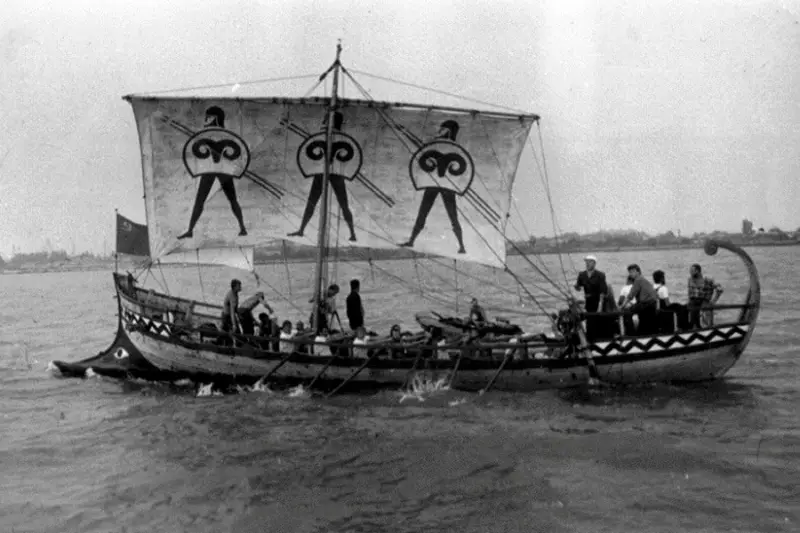
"Argo" by Tim Severin
Matthew's Gospel, 5: 6
People and story. Who among us has not heard about the most famous and famous traveler of the twentieth century, Thor Heyerdahl. His amazing adventures (in the good sense of the word), and even his talentedly written books, not only made him famous, but also set an example for his followers and encouraged many young people to follow the paths of ancient sailors and explorers. But most likely not everyone will answer who can be put in second place after Heyerdahl. Although this man and his life story are also worthy of attention and respect: this is the Irish navigator Tim (Timothy) Severin.

Tim Severin
And his travel career began with the fact that in 1946 he was sent to study at the English closed school Tonbridge. He then graduated from Oxford University in 1960 and received a master's degree in geography. And then he and two comrades decided to ride a motorcycle along the path of the legendary Marco Polo... and they did! After which he wrote his first book, “In the Footsteps of Marco Polo” (1964). This is how his travels began. But there was a very big difference between Heyerdahl’s voyages and Severin’s expeditions. The first put forward a hypothesis and tried to test the possibility of its implementation in practice. The second explored myths about sea voyages and tested in practice whether these “mythical” events were possible in reality.

Tim Severin with model "Brendan"
The travel routes of Heyerdahl and Severin often coincided. But this happened because there are only four oceans on the globe, so such coincidences are not at all surprising. And another common feature of both was that they both built expeditionary ships from materials that were used by our ancestors, or using their technologies.
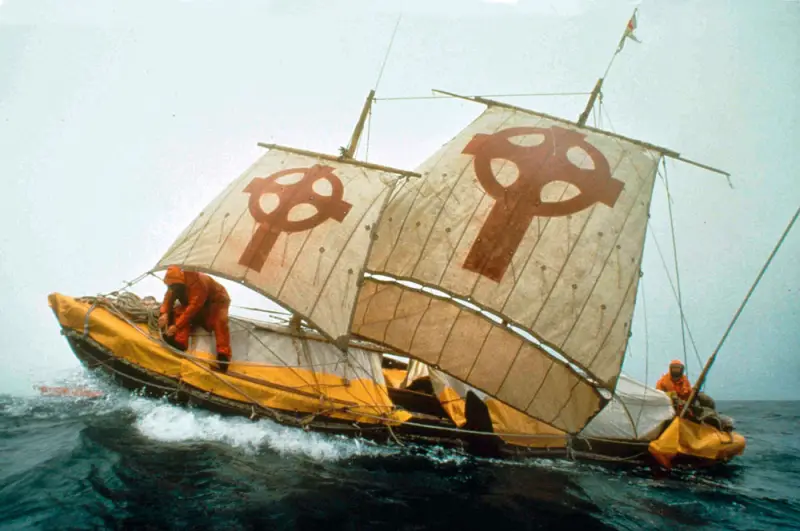
"Brendan" at sea
So, Tim Severin decided to prove that in medieval chronicles the voyage of St. Brendan could really take place and was not an idle fiction. That is, he essentially suggested that Irish monks visited America 400 years before the Vikings, sailing through the Faroe Islands. And then Iceland and Greenland. However, in Ireland at that time there were no ships other than those made from tanned ox hides, called currachs. Previously, it was believed that it was only suitable for coastal navigation, and that currachs could not be sailed at sea for a long time, and that they had to be regularly pulled ashore for drying and processing. Otherwise, they say, the leather upholstery will decompose in sea water.
However, Severin decided to check the ancient legend, believing that it could be based on real events. With the help of a team of enthusiasts and with his own funds raised from the sale of a yacht and car, he built an exact replica of a two-masted currach, named Brendan. And... in two stages with replacement crews, it reached from Ireland, where the Brendan was left for the winter, and to Peckford Island near Newfoundland. It turned out that ox leather, rawhide belts, flax dust, hemp ropes and ash wood perfectly withstood all the hardships of this transoceanic route.

Tim Severin with model "Sohara"
For the second time, Tim Severin followed in the footsteps of Sinbad the Sailor, from The Book of One Thousand and One Nights. An Arabian sailboat was built, and without a single metal nail. The sheathing boards were held together with cables woven from coconut fibres. The joints between them were filled with molten gum. Many doubted that such a ship would be reliable, but the construction, despite everything, was completed. Moreover, the construction of the ship this time was financed by the Ministry of National Heritage and Culture of the Sultanate of Oman. Therefore, it had to sail under the Omani flag and be called “Sohar” (after the name of the ancient trading port).
Although fate took Sinbad the Sailor to different countries, Tim Severin decided that it would be enough for Sohar to reach the Omani port of Muscat to the Chinese Canton (Guangzhou), which was done. The voyage took place from November 23, 1980 to July 11, 1981 and ended quite successfully. That is, “Sohar” also withstood the blows of the sea elements, and... it became obvious that the legendary Sinbad could well have sailed along this route on similar ships!
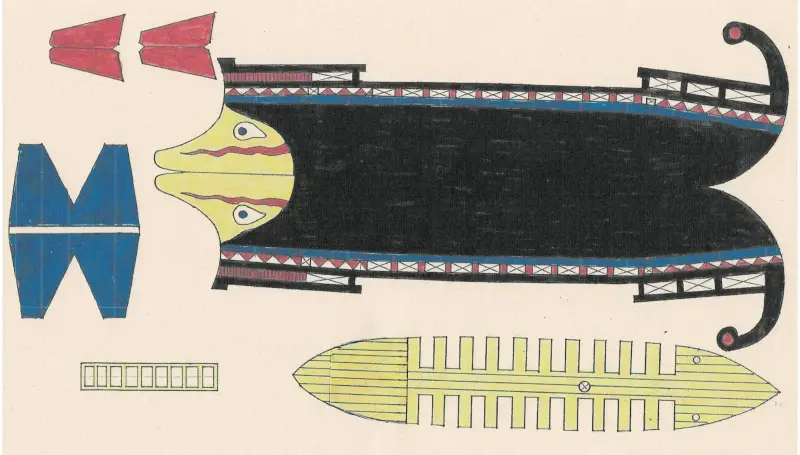
And these are developments of a model of the Argo ship, which can be made from paper. All you need to do is print out these patterns, stick them on thick paper and turn them into an interesting toy, souvenir or visual aid for school!
But Tim Severin’s third expedition ship was the ancient Greek ship Argo, built from pine wood. According to skeptics, the twenty-oared ship could not overcome the powerful oncoming current in the Bosphorus Strait. And although the prospect of rowing 1,5 thousand nautical miles with oars and moving at a speed of half a knot did not appeal to everyone, they still managed to recruit new Argonauts, after which Severin set sail to the shores of Soviet Colchis.
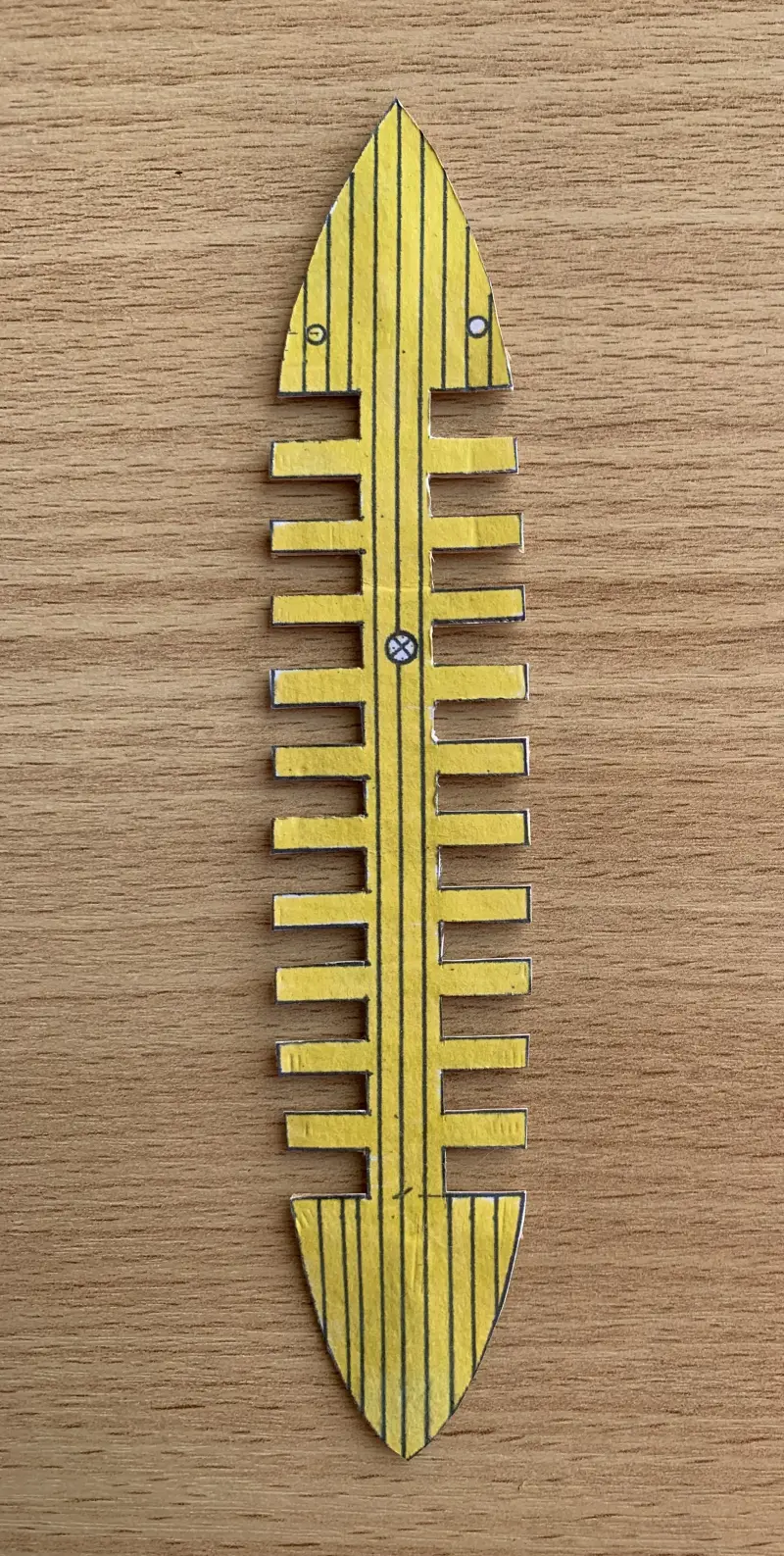
Finished paper deck
The voyage, which began in May 1984, took place in the territorial waters of Greece, Turkey and the USSR. Moreover, on the Soviet stage of the route, Tim Severin was helped by former member of Heyerdahl’s Tour team, Yuri Senkevich. He met the guests off the coast of Georgia, and then, at his suggestion, the four-masted training bark “Comrade” towed the “Argo” from Batumi to Istanbul.
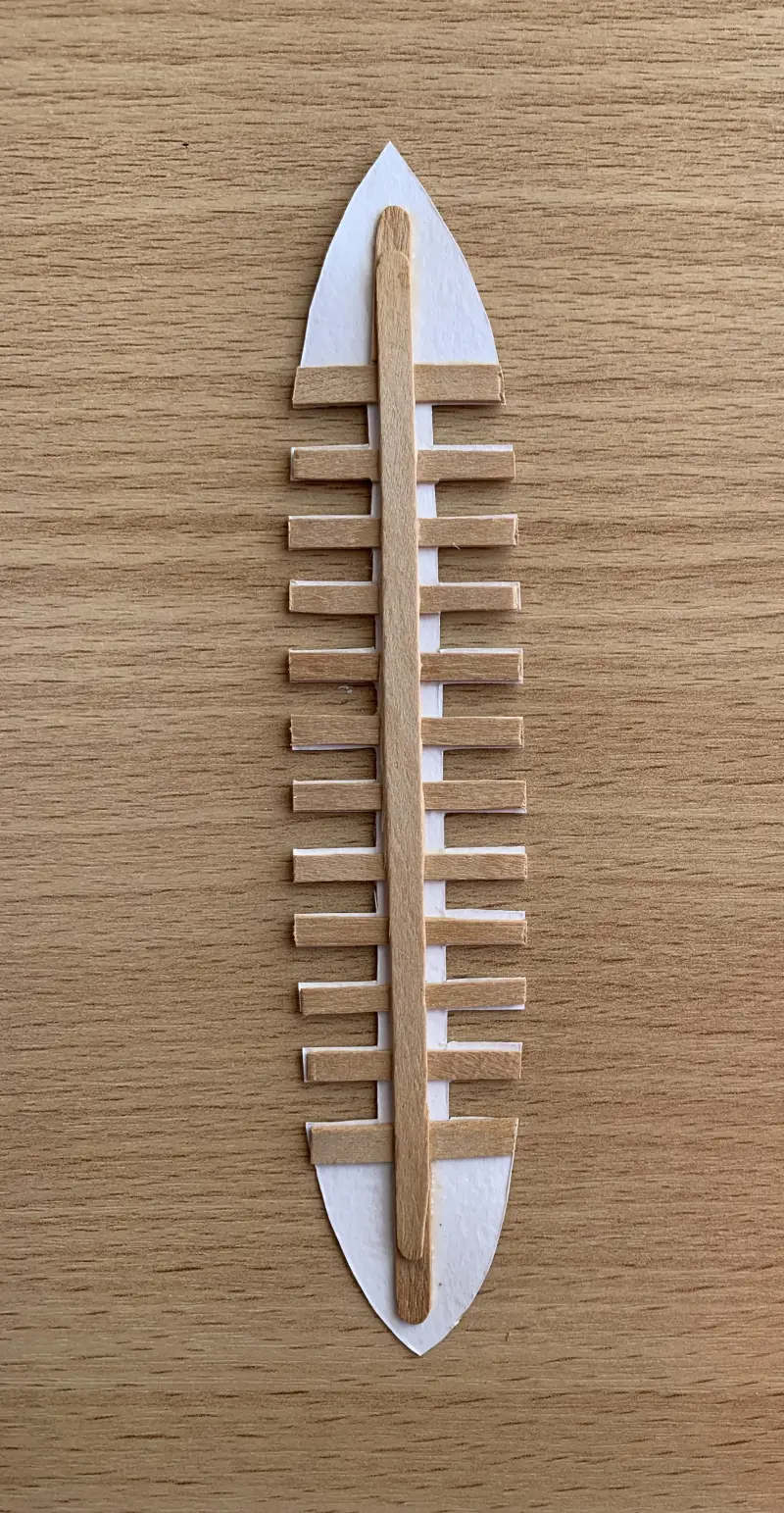
And this is what it looks like from the inside: for the sake of strength, coffee stirrer sticks are glued to it
It is interesting that the term “golden fleece” itself could well have been born here, because in Georgian Svaneti an original method of gold mining has been used since ancient times. Local gold miners laid out sheep skins on wooden frames in the streams flowing from the mountains. Well, since their water carried with it small grains of gold, they got stuck in the sheep's wool and gradually turned the most ordinary fleece into gold! Allegedly, this ancient myth arose from this technology!

The body is cut out with a modeling knife, holes are cut on it, after which it is glued together at the ends...
Well, then Tim Severin decided on the same “Argo” to repeat Odysseus’s voyage from Troy through Bulgaria (Thrace) and the eastern coast of Greece, the island of Crete, and the western coast of Greece with the final finish on the island of Ithaca. And again, he repeated. This proved that, in principle, Odysseus could not get to his home right away, that storms and winds could carry him across the Mediterranean in different directions, and that he could well have been looking for his way home for quite a long time. And only then the Aed singers wove all sorts of fantastic fiction about his voyage, but Homer heard their chants and... so he wrote his poem!
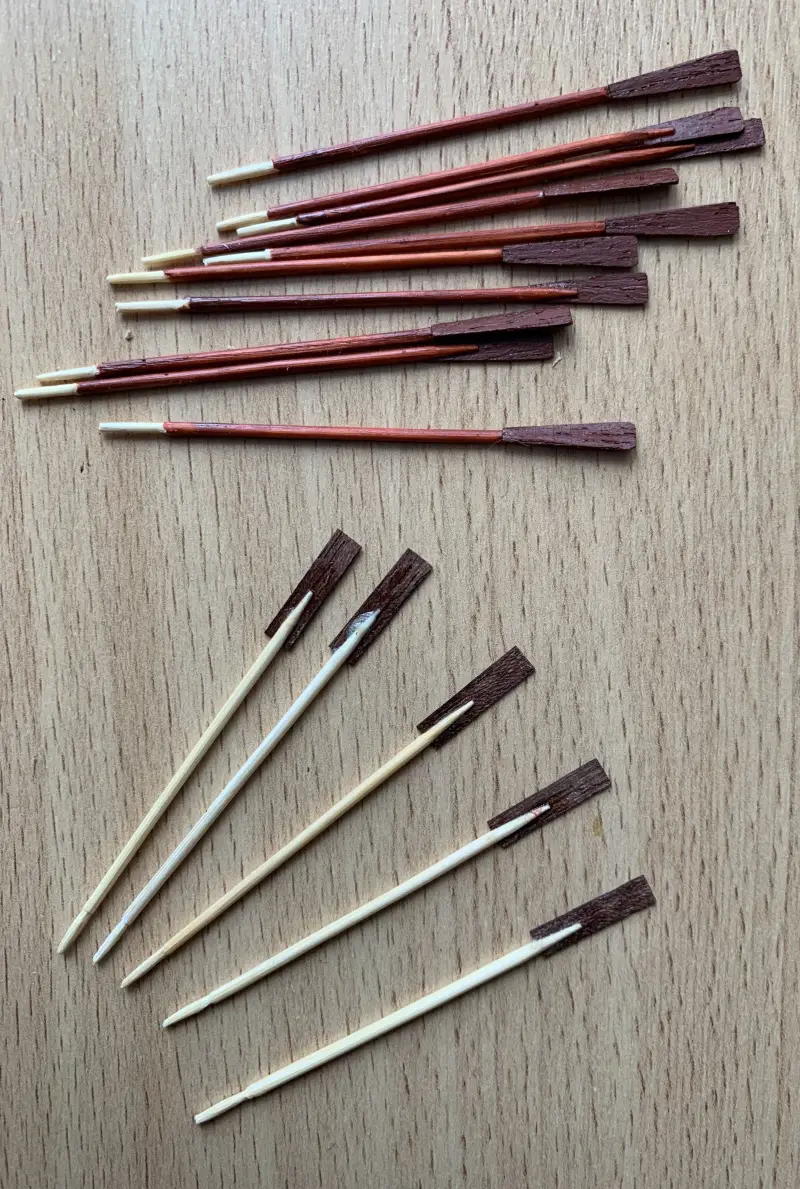
The oars are Chinese toothpicks: at the bottom in the process of working on them, at the top they are finished and painted. Blades – 4 mm veneer from SV Model company
The only time he failed was when he traveled from Vietnam to America on a bamboo raft in May 1993. The fact is that the treatise “Shi Ji” by the ancient Chinese historian Sima Qian told about the journey of the navigator Xu Fu on the orders of Emperor Qin Shi Huang, which he made in search of the elixir of immortality. Severin decided that he could easily reach America. However, this time he was unlucky. There were typhoons and monsoon winds. He even had to face the threat of modern piracy. The voyage lasted 105 days, and during this time Severin's raft traveled 5500 miles in the ocean. And although little more than a thousand miles remained to the shores of America, the rattan ropes that tied the raft began to break, and the voyage had to be stopped.

Drawing on the sail
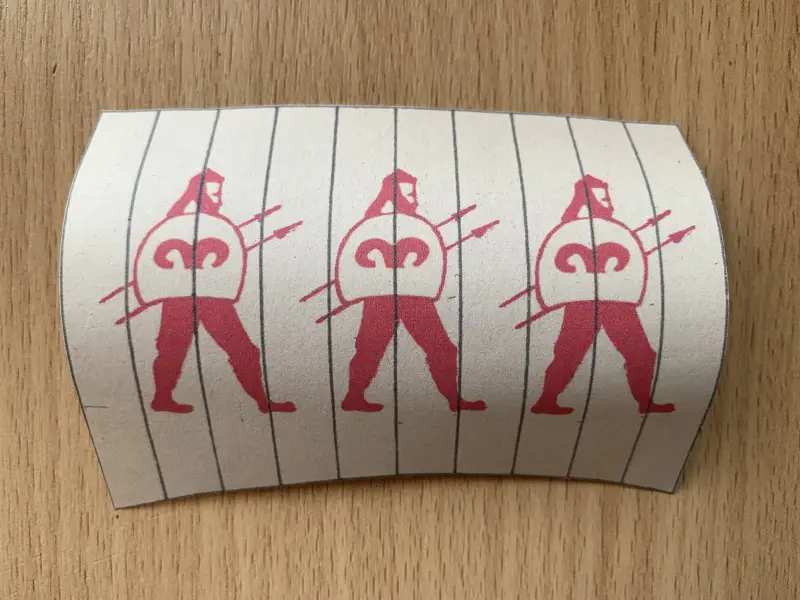
Ready-made paper sail
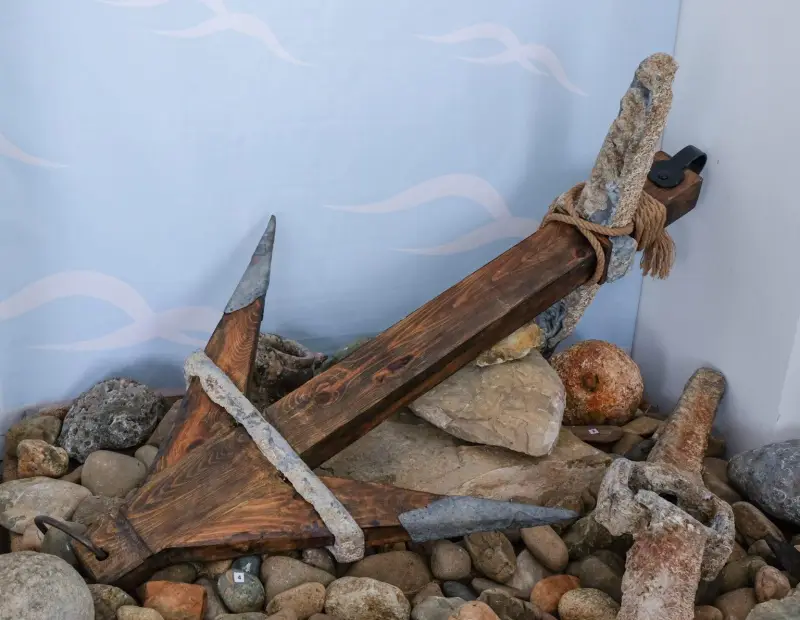
Antique anchor. Reconstruction from the exhibition of the Anapa Archaeological Museum
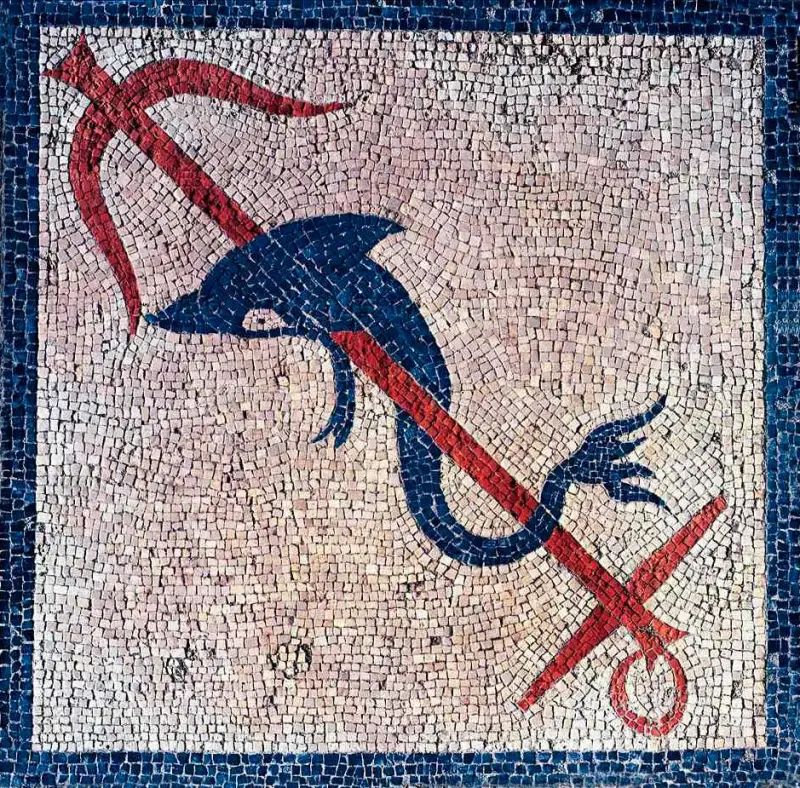
Mosaic "Dolphin and Anchor". Delos, “House of the Trident”, 2nd century. BC e.
But in 1996, when Tim Severin decided to visit the islands of Indonesia, and a team of native carpenters from the Kai archipelago built him a classic Indonesian prau, his voyage went well. With a team of six people, he walked around a number of islands in four months, paying attention to the current state of their animal world.
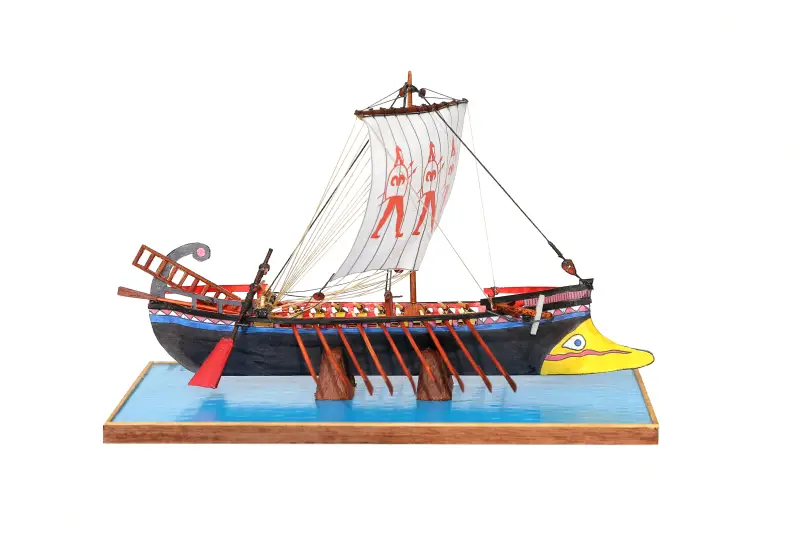
Ready-made Argo model with a fabric sail. Numerous ship riggings are attached to the model using dowels made from the same Chinese toothpicks... Work and photography by the author
Tim Severin also rafted down the Mississippi, in 1999 he looked for a white whale and repeated the path of the Pequod ship from the novel Moby Dick, put forward an original theory about the true prototype of Robinson Crusoe and also became famous as a fiction writer. From his pen came three voluminous cycles of historical novels - “Viking” (three books), “Corsair” (five books) and “Saxon” (three books). And this is not counting his nine scientific and popular science books dedicated to his travels!
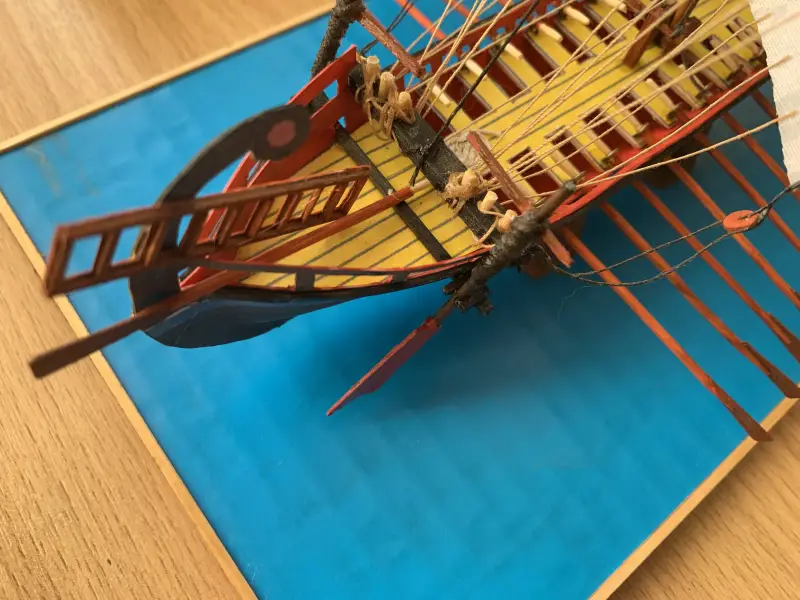
Numerous ship riggings are attached to the model using dowels made from the same Chinese toothpicks... Work and photography by the author
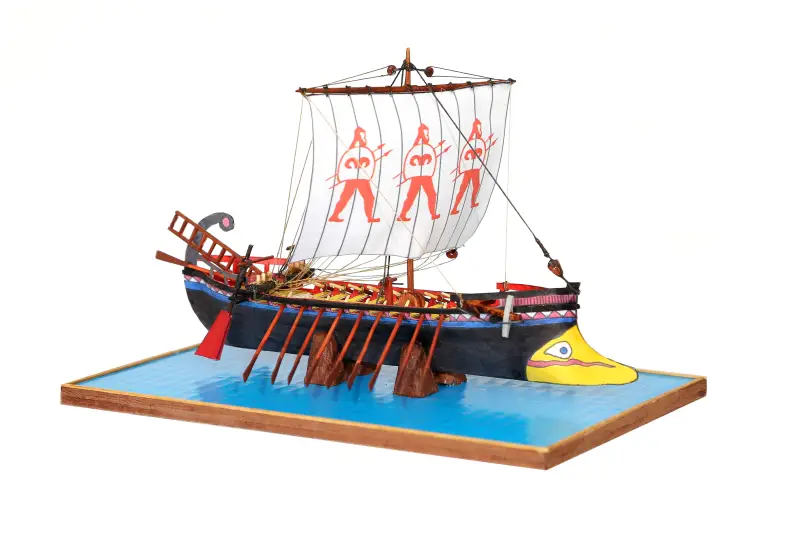
Ready-made Argo model. The sail is made of fabric, the design is printed on it. The rod of the wooden anchor is clearly visible, which in ancient times was cast from lead and therefore painted gray (although it could have been painted black). The model is equipped with a spare oar and ladder
He spent the last years of his life in the small village of Timolige (County Cork in Ireland), with only about three hundred inhabitants, and died there on December 18, 2020, leaving behind a daughter from his first marriage, Ida Ashworth, and two grandchildren.
PS
The model turned out to be simple, but beautiful. And most importantly, it can be used in 5th grade Ancient History lessons. And this is what I came up with an idea and at the same time a proposal: what if those of the VO readers who liked it and who want to repeat it, do it for their own entertainment, and then... donate it to the history classroom of the school closest to them? This will be pleasant for you and useful for the children, since such models are rarely seen in schools. And sometimes we talk a lot about how “we need to help the school today,” but at the same time we are waiting for some mythical “master” who will come and do everything for us, while we can do a lot ourselves. Well, if someone decides to do such an act, let him tell me the name of the city and the number of the school where he ended up. It is possible that sooner or later we will conduct interesting research in the field of practical pedagogy. Well, this ship is already in the 6th linguistic gymnasium of the city of Penza, fortunately it is located very close to my house... If you need consultations, write to VO in a personal message. I will always be happy to answer you.
Information